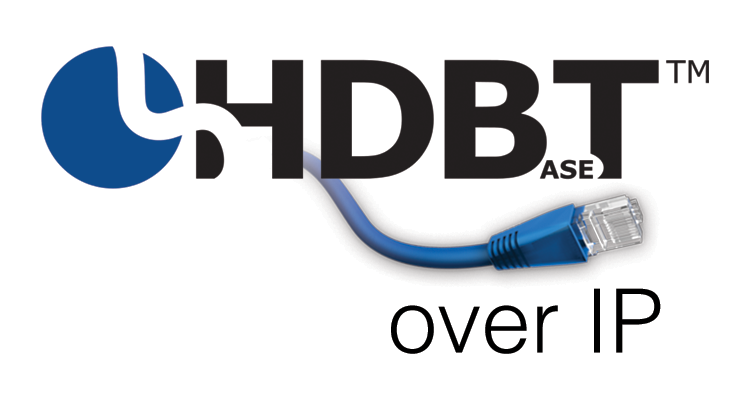Hdbaset


HdBaseT
Title: HDBaseT: Revolutionizing Audio Connectivity and Transmission
Introduction
In today's digital age, audio connectivity and transmission have become crucial for various industries and applications. HDBaseT, an innovative technology, has emerged as a game-changer in this domain. This article explores HDBaseT in detail, highlighting its features, benefits, and applications. From its inception to its widespread adoption, we delve into the world of HDBaseT and its impact on audio connectivity.
What is HDBaseT?
HDBaseT stands for High-Definition Baseband Transmission, and it is a connectivity standard that enables the transmission of uncompressed high-definition video, audio, power, Ethernet, and control signals over a single CAT5e/6/7 cable. Developed by the HDBaseT Alliance, this technology has gained significant traction due to its ability to simplify installations, reduce costs, and deliver superior audio quality.
Features and Benefits of HDBaseT
HDBaseT offers several features and benefits that make it an attractive choice for audio connectivity. Firstly, it supports the transmission of uncompressed audio signals, ensuring high-quality sound reproduction without any loss or degradation. This is particularly important for applications such as home theaters, conference rooms, and live events where audio fidelity is paramount.
Additionally, HDBaseT provides long-distance transmission capabilities, allowing audio signals to be transmitted up to 100 meters (328 feet) without any signal loss. This extended range makes it ideal for large venues or installations where audio sources and receivers are located far apart.
Furthermore, HDBaseT simplifies installations by eliminating the need for multiple cables and connectors. With a single CAT cable, audio, video, power, Ethernet, and control signals can be transmitted, reducing clutter and making installations more efficient.
Applications of HDBaseT
HDBaseT finds applications in various industries and settings. In the residential sector, it is widely used in home theaters, multi-room audio systems, and whole-house audio distribution. With HDBaseT, homeowners can enjoy high-quality audio throughout their homes without the need for complex wiring or additional equipment.
In the commercial sector, HDBaseT is extensively used in conference rooms, auditoriums, and retail spaces. It allows for seamless audio connectivity between different devices, such as microphones, speakers, and audio mixers, enabling efficient communication and presentations.
HDBaseT is also gaining popularity in the professional audio industry. It provides a reliable and high-quality audio transmission solution for live events, concerts, and broadcasting. Audio engineers and sound technicians can rely on HDBaseT to deliver pristine audio signals without any interference or latency.
Moreover, HDBaseT is utilized in the education sector, where it facilitates audio connectivity in classrooms, lecture halls, and training centers. Teachers and presenters can easily connect their audio devices to the sound system, ensuring clear and intelligible audio for all participants.
HDBaseT has revolutionized audio connectivity and transmission by offering a comprehensive solution that combines high-definition video, audio, power, Ethernet, and control signals over a single cable. Its features, such as uncompressed audio transmission, long-distance capabilities, and simplified installations, have made it a preferred choice for various industries and applications. Whether it's a residential home theater or a large-scale live event, HDBaseT ensures superior audio quality and seamless connectivity. As technology continues to evolve, HDBaseT is poised to play a significant role in shaping the future of audio connectivity.

HDBaseT is a connectivity standard that enables the transmission of audio, video, Ethernet, power, and control signals over a single Cat5e/6/7 cable. In this comparison, we will explore the pros and cons of HDBaseT, highlight the differences between HDBaseT and Dante, and discuss the technology that has replaced HDBaseT.
Pros of HDBaseT:
1. Long Distance Transmission: HDBaseT supports transmission distances of up to 100 meters (328 feet) without signal degradation. This makes it suitable for large-scale installations where long cable runs are required.
2. High-Quality Video: HDBaseT supports the transmission of uncompressed high-definition video, including 4K resolution, with minimal latency and no loss in quality. It ensures a visually stunning and immersive viewing experience.
3. Power over HDBaseT (PoH): HDBaseT allows for the transmission of power over the same Cat5e/6/7 cable, eliminating the need for separate power cables. This simplifies installation and reduces clutter.
4. Ethernet and Control Signals: HDBaseT supports the transmission of Ethernet and control signals, enabling the integration of various devices and control systems into a single network. It allows for centralized control and management of connected devices.
5. Industry Standard: HDBaseT is an industry-standard connectivity solution, supported by a wide range of manufacturers and devices. This ensures interoperability and compatibility between different HDBaseT-enabled devices.
Cons of HDBaseT:
1. Limited Scalability: HDBaseT is primarily designed for point-to-point connections, limiting its scalability in larger audio and video distribution systems. It may require additional equipment, such as matrix switches, to expand the number of endpoints.
2. Cable Length Limitations: While HDBaseT supports long-distance transmission, the maximum cable length is limited to 100 meters. This may pose challenges in installations that require longer cable runs.
3. Bandwidth Limitations: HDBaseT has a limited bandwidth compared to other audio and video networking solutions. It may not support the same level of audio channel count or video resolution as technologies like Dante.
Differences between Dante and HDBaseT:
1. Transmission Method: Dante is an audio networking solution that utilizes IP networks for audio signal transmission, while HDBaseT is a connectivity standard that uses Cat5e/6/7 cables for audio, video, and control signal transmission.
2. Application Focus: Dante primarily focuses on audio distribution and networking, offering features like low latency, high-quality audio, and advanced synchronization. HDBaseT, on the other hand, is designed for audio and video connectivity in home theater, commercial AV, and digital signage applications.
3. Scalability: Dante offers high scalability, allowing for the expansion of audio systems with hundreds of channels. HDBaseT, while suitable for point-to-point connections, may require additional equipment for larger audio and video distribution systems.
4. Integration: Dante provides seamless integration with various audio devices, mixing consoles, and software applications, allowing for flexible routing and control. HDBaseT integrates audio, video, Ethernet, and control signals into a single cable, simplifying connectivity in AV installations.
Replacement for HDBaseT:
HDBaseT has been widely adopted in the AV industry, but it has faced competition from newer technologies. One such technology that has gained popularity is AV-over-IP (Audio-Visual over Internet Protocol). AV-over-IP solutions, like Dante, offer greater scalability, flexibility, and advanced features compared to HDBaseT.
AV-over-IP solutions leverage standard IP networks to transmit audio, video, and control signals, allowing for unlimited scalability, long-distance transmission, and integration with other IP-based systems. Dante, specifically designed for audio networking, has become a leading choice for professional audio applications, offering low latency, high-quality audio, and extensive interoperability.
In conclusion, HDBaseT offers advantages such as long-distance transmission, high-quality video, and power over a single cable. However, it has limitations in scalability and bandwidth compared to technologies like Dante. AV-over-IP solutions, including Dante, have emerged as replacements for HDBaseT, providing greater scalability, flexibility, and advanced features for audio and video distribution over IP networks.


